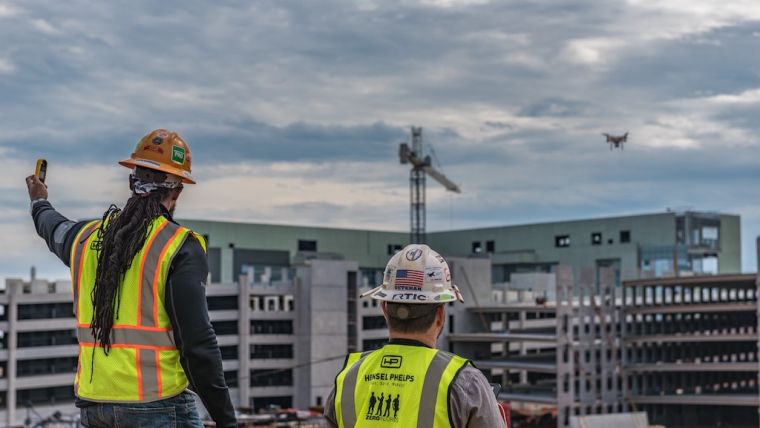US Construction Workloads Fall during COVID-19 Pandemic
As the economic fallout from the ongoing COVID-19 outbreak takes hold, Q1 2020 RICS/AACE US Construction and Infrastructure Survey results show a significant deterioration in market sentiment. Having increased firmly during the final quarter of 2019, total workloads fell in Q1 of this year, with the net balance deteriorating from +45% to -12%. Looking into the breakdown by sector, private industrial and commercial workloads suffered the most noticeable quarterly declines (posting net balances of -17% and -16% respectively).
At the other end of the scale, the feedback received points to a more resilient trend in the public residential sector, as workloads reportedly edged slightly higher throughout Q1 as a whole.
In the infrastructure sector, the headline workloads net balance fell to +5% in Q1, down from a reading of +54% previously. Within this, workloads on harbors, road, and rail projects saw the steepest declines over the quarter. By way of contrast, respondents report that activity continued to rise (albeit at a moderated pace) in the communications and airports sectors.
Boosting infrastructure spending
There also seems to be a split between changes in workloads for new projects and those for repair and maintenance work. Indeed, while the former experienced a noticeable fall over the quarter, the latter has held up much better (at least for the time being). Nevertheless, overall profit margins were reported to have fallen in Q1, following a steady trend in Q4. 56% of survey participants view financial constraints as a critical impediment to market activity, while 65% cite a shortage of skilled labor to be causing difficulties.
“It is clear that professionals expect governments to boost infrastructure spending on the road to economic recovery,” said Sean Ellison, senior economist at RICS. “This will provide a ray of light amid the gloomier outlook for the sector, perhaps pointing to a way out of the current downturn.”
Twelve-month expectations were downgraded across all categories compared to Q4. For infrastructure, the net balance of respondents expecting an increase in workloads over the year ahead fell to just +5%, sharply lower than +63% last time. For non-infrastructure workloads, expectations have turned completely flat and now standing at zero (compared to a reading of +63% in Q4). Alongside this, a net balance of -12% of contributors now expect headcounts to contract (net balance was +73% in Q4). A net balance of -30% of respondents expect profit margins to be further squeezed in the twelve months ahead.
Silver lining
Chris P. Caddell, president elect, AACE International, and senior vice president, Turner & Townsend, commented: “COVID-19 has had an unprecedented impact on the construction and infrastructure industries, resulting in a complete reversal in these markets in an incredibly short period of time. The hope is that as we develop treatments and practices to help deal with this crisis, the impact will be relatively short term. The silver lining is that this pandemic has pushed us to innovate, creating new and better ways to work and collaborate. Ideally some of these improvements will benefit the industry as we recover.”
Source: RICS.

Value staying current with geomatics?
Stay on the map with our expertly curated newsletters.
We provide educational insights, industry updates, and inspiring stories to help you learn, grow, and reach your full potential in your field. Don't miss out - subscribe today and ensure you're always informed, educated, and inspired.
Choose your newsletter(s)












